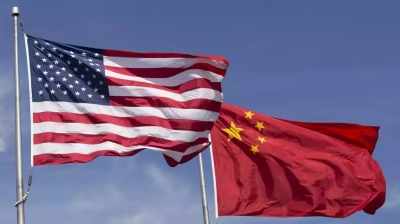Beijing, 4 April (IANS). China has decided to impose an additional 34 percent tariff on all products imported from the US from April 10, which threatened the trade war. China’s Customs Tariff Commission made this announcement on Friday.
The move was taken after the US decision, in which Washington announced the imposition of ‘mutual tariff/ recipes’ on China’s exports.
According to the news agency Xinhua, China’s Customs Tariff Commission said that the US step is not in line with international trade rules, it severely damage China’s legitimate rights and interests and is an action to create a unilateral pressure.
The Chinese Ministry of Commerce said that it is adding 11 American companies to the list of its ‘unreliable institutions’, so that they would not be able to trade with Chinese companies in China or in Chinese companies.
The Ministry has also imposed strict restrictions on the exports of some rare earth elements, such as gedolinium and yatrium,, which are mainly mined in China and used from electric cars to smart bombs.
US President Donald Trump announced 54 percent of reciperoot tariffs on China, including the pre -levied fees. This made China one of the most affected countries on the tariff list.
Global investment bank JP Morgan said that now by the end of 2025, 60 percent of the opportunity is being seen in the recession of the global economy, which was 40 percent earlier.
According to analysts, reciperochl tariffs imposed by the US will definitely affect all countries, but Indian exporters can avail more benefits as China will face high fees of 65 per cent or more.
The additional 27 percent of tariffs for India holds it at the bottom half of the targeted countries, which can create new opportunities in addition to traditional export areas such as engineering goods, electronics, gems and jewelery, textiles and costumes.
Tariffs can also move competitiveness in areas where other regional exporters are more severely affected.
According to experts, to maximize this benefit, India will not only have to negotiate with the US to maintain the market access, but also cooperate to reorganize the supply chains with its Free Trade Agreement (FTA) partners in Asia and take advantage of new opportunities.
-IANS
PSM/MK
